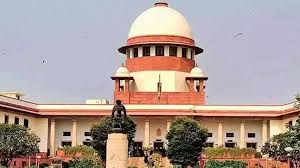Craftsvilla is an Indian-based e-commerce platform that sells ethnic items for women, such as ethnic clothing, ethnic footwear, ethnic fashion accessories, ethnic handcrafted home accessories, lifestyle products, and beauty products from the industry. Craftsvilla, created in 2011 by Monica & Manoj Gupta, is an online marketplace for exclusive handmade, handmade, organic, and gift products. The firm claims to have more than 25,000 sellers on its website, offering nearly 3.5 million products. Worldwide, the Craftsvilla ship is free of charge for items worth over $250. The start-up claims to sell more than 4 million items to over 25,000 artisans and designers. The products are classified into different categories, each further divided into sub-segments, such as jewelry, handbags, home décor, clothes, food & health, footwear, etc. With almost 80% of buyers being women, Craftsvilla is so famous for ethnic wear. The push would be to improve craftsmanship and make it readily available. They try to keep things bright and vibrant, which draws customers from the 18-35 age group. About 50 percent of the orders come from cities in Tier 2. And as with e-commerce portals in India, Cash On Delivery makes up 50 percent of revenues (COD). What is Craft villa.com? Craft villa.com is basically an online platform for selling ethnic products, natural and organic products, etc like Flipkart, Amazon, etc. However, Craftsvilla offers a variety of products like sarees, lehenga, jewelry, handmade accessories, salwar suits, etc. Craftsvilla becomes a bridge between the local seller and customers. It enhances the profits of the local seller, creates their business brand and preserves the culture of India and their locality. It is not mandatory that the seller must be of state level but any local seller can become a seller on Craftsvilla by following a simple process. Craftsvilla provides the facility of shipping products online. Documents required for Craftsvilla Seller Registration PAN Card GST Registration (if in case applicable) Identity proof Canceled cheque Bank Account details Trademark registration certificate, (if there is any). VAT/TIN Craftsvilla Registration – Requirements Business Registration There is no requirement for a specific type of business entity to become a seller on Craftsvilla. But, we recommended Craftsvilla sellers to be registered as a LLP or Private Limited Company to enjoy limited liability protection and easy access to credit. Further, being registered as a corporate entity would ensure that the business is scalable and transferable in the future. In addition, listing on other ecommerce portals would also be easier and faster while being registered as a corporate entity. VAT or Service Tax Registration To sell on Craftsvilla, VAT or TIN registration is not mandatorily required. VAT registration or service tax registration maybe required if the seller proposes to sell taxable goods or services through the platform. However, to complete the seller registration process, VAT or service tax registration details or documents is not mandatorily required. PAN and Bank Account PAN of the seller is mandatorily required on Craftsvilla. In addition, bank account details of the seller along like account holder name, account number, IFSC code and bank details are required to process payment to the seller. Trademark Registration On beginning to sell on online platforms, any brand would get a lot of exposure. Hence, its important to ensure that the brand is trademarked to avoid counterfeit goods or competitor listing for the same product in the long term. Hence, its recommended that sellers selling their own brand of goods or services on Craftsvilla obtain Trademark registration. FAQs What is Craftsvilla? Craftsvilla is an online marketplace that specializes in ethnic products, including apparel, accessories, home decor, and handcrafted items. It allows artisans, designers, and sellers to showcase and sell their products to customers across India and internationally. Who can register as a seller on Craftsvilla? Anyone who creates or sells ethnic and handcrafted products, such as artisans, designers, small businesses, or independent sellers, can register on Craftsvilla. Sellers should have unique, authentic products in categories like apparel, accessories, jewelry, home decor, or other ethnic items.





